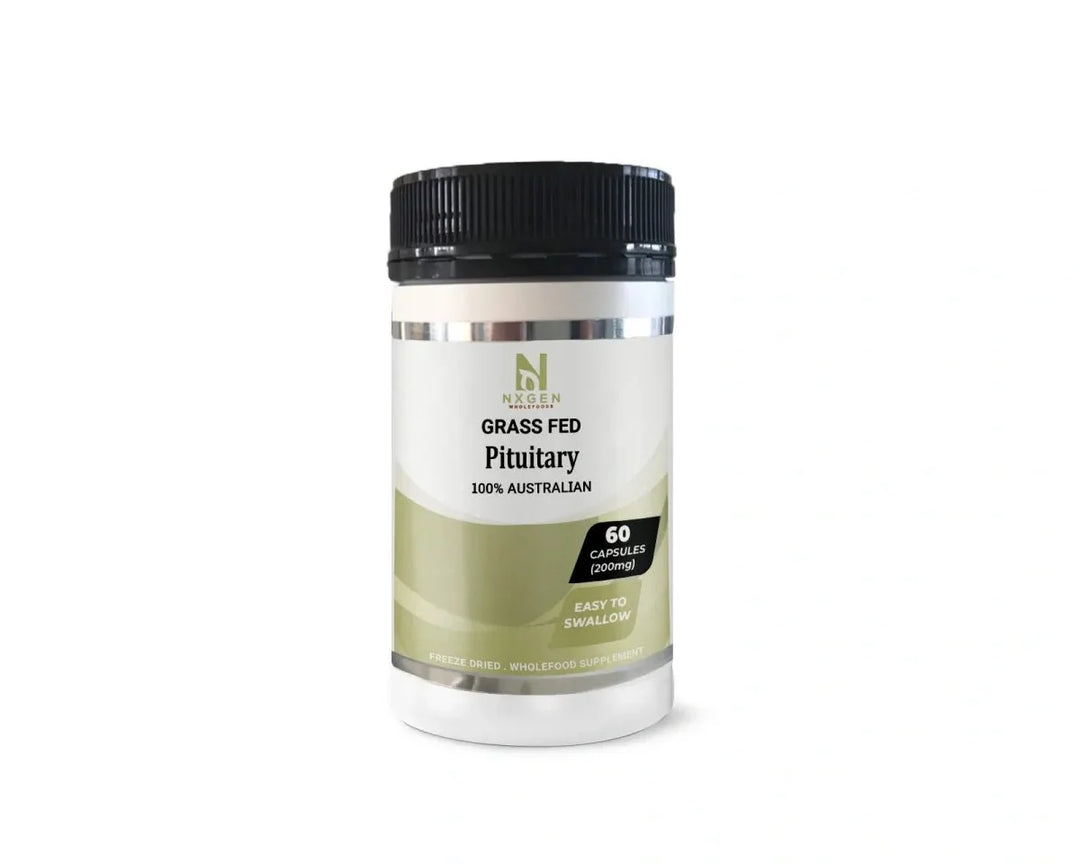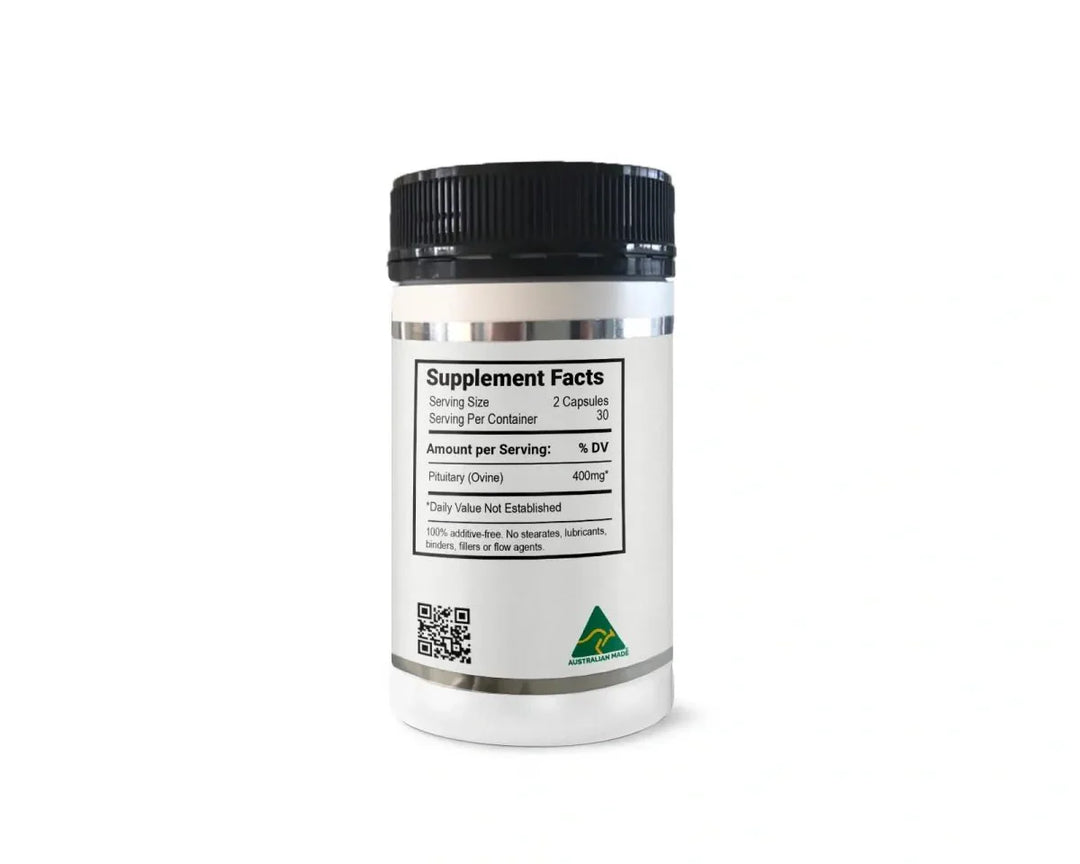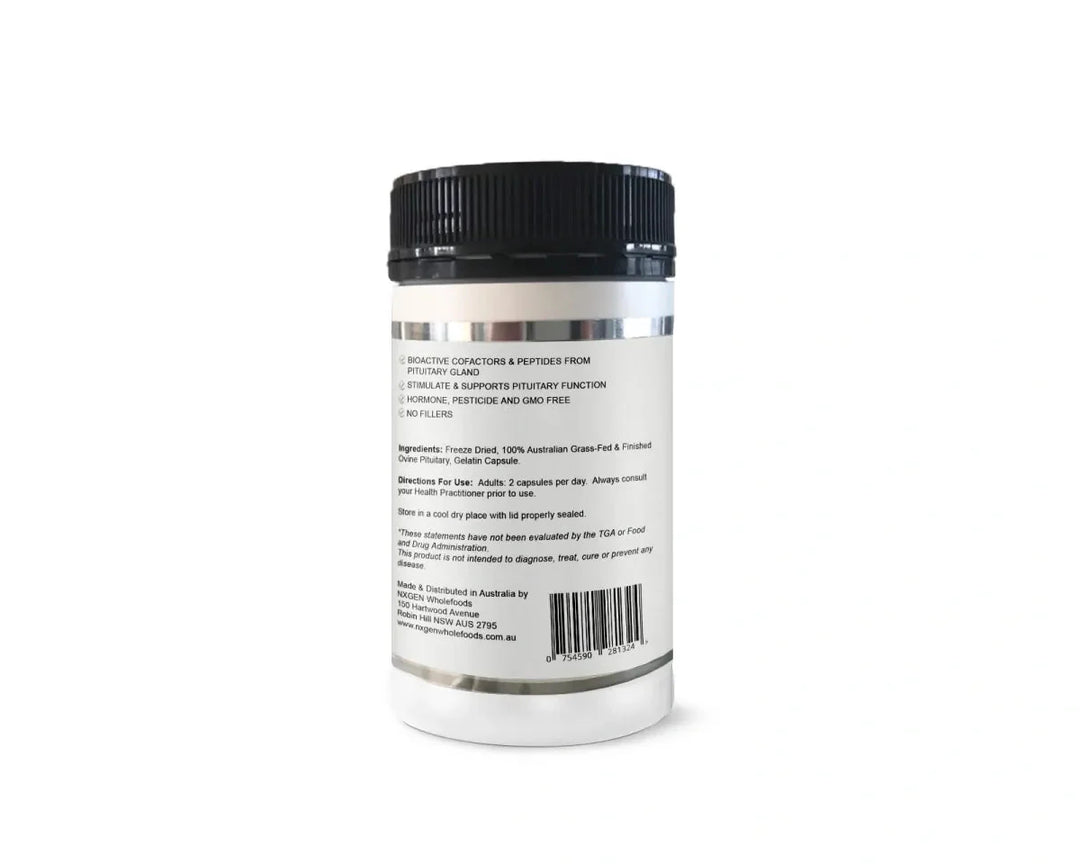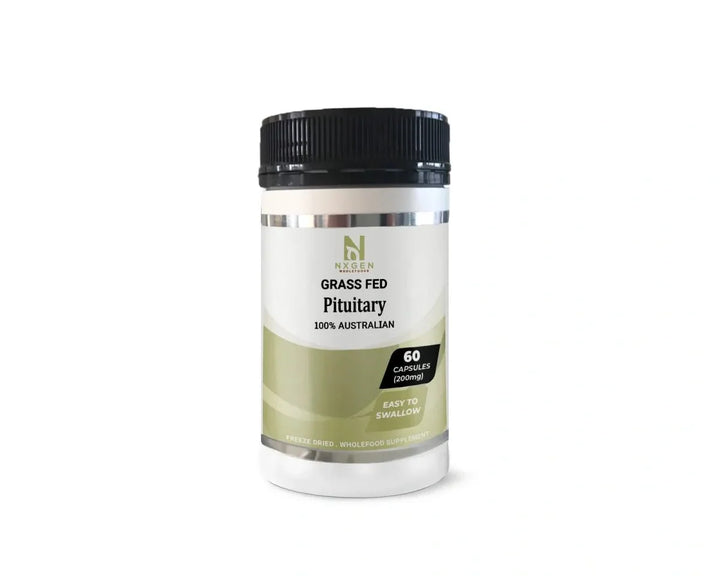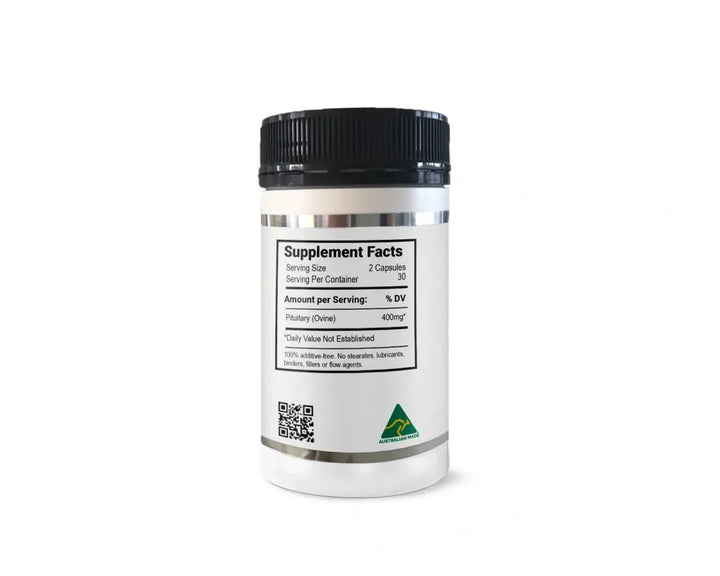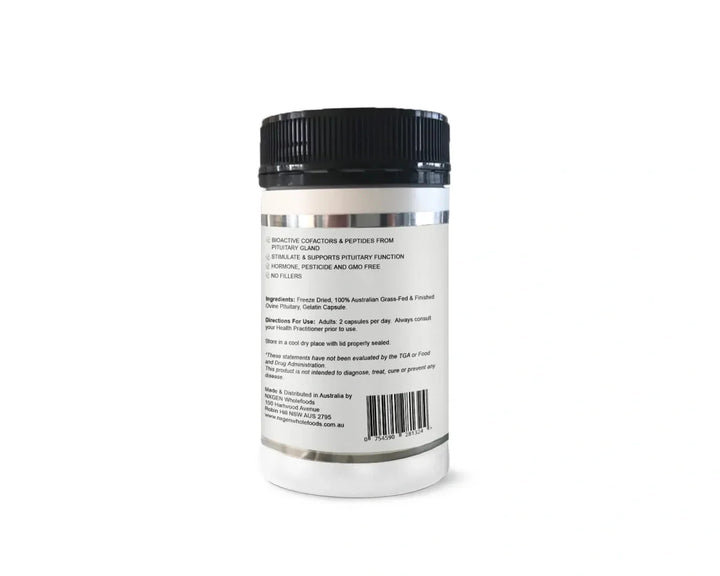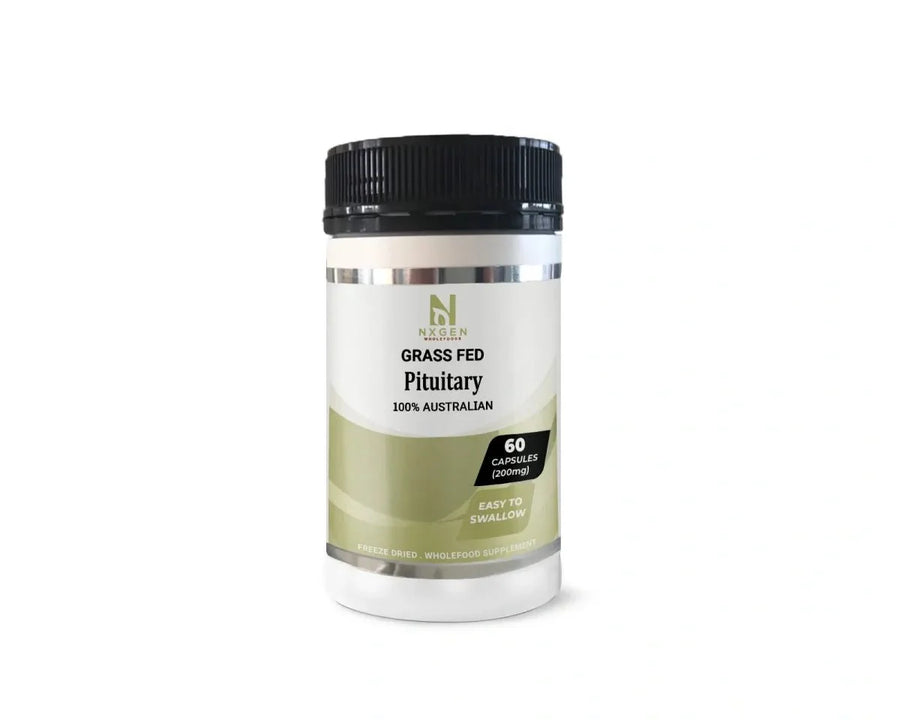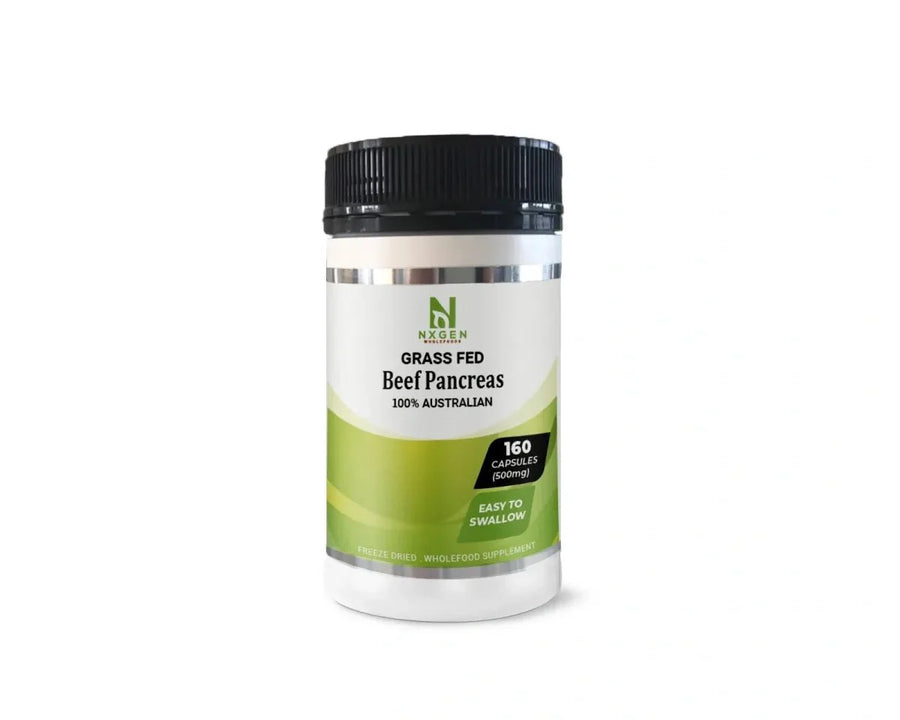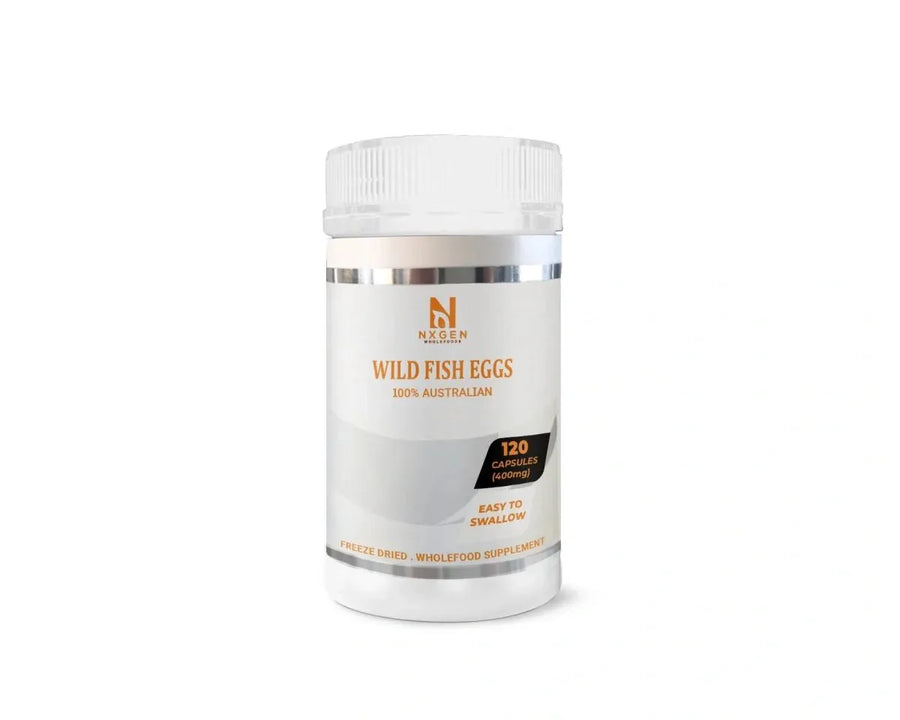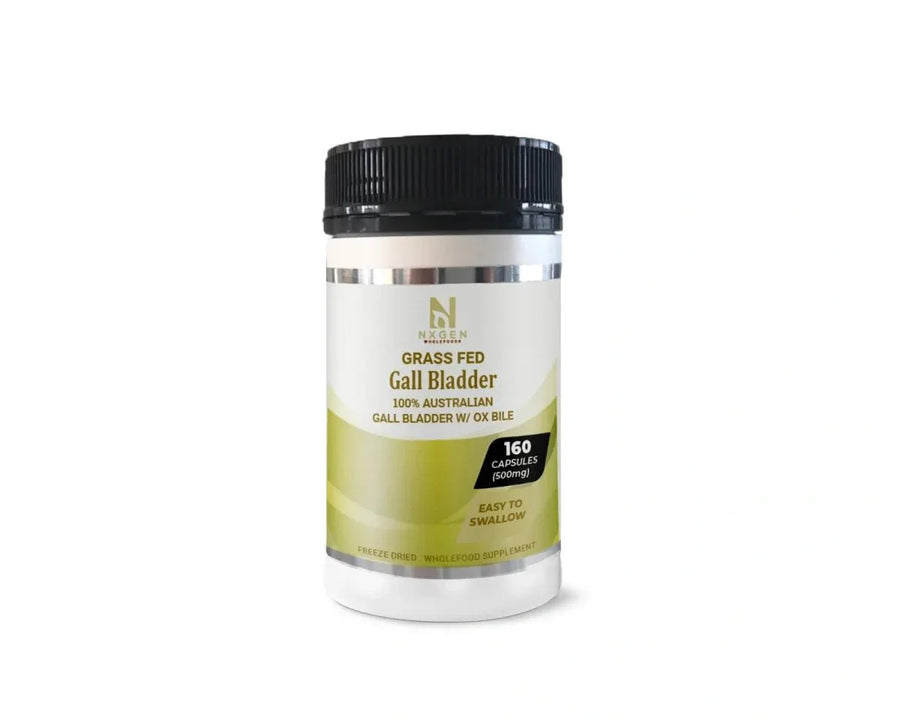For most of human history, traditional cultures and ancestors effortlessly consumed (nose-to-tail) the things we needed for strength, health, and happiness. Like the fertile ground that we once walked upon, traditional cultures considered themselves to be hunters and gatherers, natural custodians of their land — always grounded, always connected to their country. In the modern world, we unknowingly struggle to fulfil our nutritional needs to support and sustain a vibrant, disease-free life. We are now part of a world where our cognitive health is ailing. The solution is to address the root cause with dietary, lifestyle, and behavioural choices while nourishing and supporting our bodies and brains with proven anthropological ways that are backed by modern science, this includes the consumption of Grass Fed Pituitary.
The pituitary gland is a hormonal regulatory endocrine gland located at the base of the brain near the hypothalamus to regulate bodily functions. This gland releases hormones (chemical messengers) that travel to their target organs by flowing through your bloodstream; once they reach their destination‚ they trigger the release of more hormones. This small gland is responsible for nine important hormones, somatotrophins (human growth hormones), thyrotrophins (thyroid-stimulating hormones), corticotropins (adrenocorticotropic hormone and beta-endorphin), lactotrophins (prolactin), gonadotropins (luteinising hormone, follicle-stimulating hormone), and melanotrophins (melanocyte-stimulating hormones). Most of these hormones are responsible for the way individuals look, their sex drive, a healthy functioning reproductive system and their mood. Pituitary secreted hormones include the secretion of oxytocin regarded as the love hormone and dopamine, two very important hormones that affect our mood. A normal level of these two hormones will make an individual content, a higher level (as secreted after a laughter session, sex or entertainment) will make an individual feel happy and a lower level might even make the individual depressive.
Since it's always active‚ the pituitary gland can become worn out as you age; this may also slow the rate of hormone production. This can lead to poor functioning in the organs that your pituitary gland controls. You can lessen the effects of these problems by taking supplements. Natural supplements can provide the nutritional support that may help stimulate and balance the workings of your pituitary gland.
NXGEN Pituitary is a glandular extract which provides a link between the nervous system and the endocrine system; and releases hormones effecting growth. sexual development, metabolism, reproduction, and bone growth made from toxin-free lyophilised glands imported from animals grazed on pastures free of pesticides; growth hormones; antibiotics or chemical additives. Special sustained release formulation ensures maximum intestinal bioavailability and efficacy.
- Pasture Raised - Australian Lake Eyre Organic Grass Fed
- Absolutely No Fillers (or) Flow Agents
- 100% Freeze Dried & Non-Defatted
- Third Party Tested For Purity
- Allergen Free
— Based on the ancestral wisdom that "like supports like," consuming Pituitary may support like for like, to support hormone production and endocrine system health.* —
— Provides peptides, cofactors, bioactive and nutritional building blocks along with specific vitamins, minerals, enzymes, and stem cells. —
Ultra Pure
— 100% pure. None of that extra stuff that most supplement companies include to save time and money (stearates, silica, etc) —
Freeze Dried
— 100% freeze dried in contrast to the heat processed varieties. This means that you get more of the heat sensitive vitamins, minerals and co-factors that make organ meats so incredibly nourishing —
Safety
— Australian Beef Cattle are free of BSE (mad cow disease), scrapie and other known TSE’s , with a national surveillance programme in place to provide comprehensive monitoring and world class biosecurity measures—
SUPPLEMENT FACTS
- Serving Size: 2 Capsules
- Servings Per Container: 30
AMOUNT PER SERVING
- Grass Fed Pituitary (Bovine) 400MG
OTHER INGREDIENTS: Gelatin Capsules
SUGGESTED USE: Four capsules daily or as directed by a healthcare professional.
MANUFACTURED IN AUSTRALIA
FDA STATEMENT
*Any statements made on this website have not been evaluated by the Australian Therapeutic Goods Administration (TGA) or Food and Drug Administration (FDA). Product information and statements made are not intended to diagnose, prevent, treat or cure any disease.
General Information on Glandulars
Consuming glandulars helps directly supply enzymes. Enzymes are biological catalysts that encourage metabolic, catabolic, and digestive processes in the body. They help rebuild and detoxify. Enzymes tend to be specific, such as eye enzymes tend to help the eyes, but are ignored in the ear. Enzymes help the respective organs they are involved with function better.
Vastly more of the enzymes that humans use are in glandulars than in plants.
Glandulars contain nutritional peptides, enzymes, and substances believed to be hormone precursors. Although some believe that oral consumption of dried glandulars is no different than consuming any other protein-containing food, this belief appears to be based on the fact that the stomach breaks down proteins into their constituent amino acids and that there is no benefit from consuming foods containing specific peptides. However, this belief ignores the fact that some ingested protein is not broken down into its constituent amino acids.
Evidence suggests that with oral consumption of glandular extracts, a small percentage (5-10%) of their peptides are not broken down into their constituent amino acids but are available for intact absorption in the small intestine [19-22]. A small amount of these absorbed peptides then circulate and some of them appear to assist the human body (especially for ill persons) in performing various anabolic and catabolic processes [18-22]. Howell and others have reported that the amount of enzymes that pass through the stomach is even higher (nearly 50% [23]). Howell has also reported that individuals with significant health problems have been found to have lower levels of enzymes than healthy individuals and that oral enzyme supplementation has been helpful for many such people [22]. Although this position is not universally accepted [24], a study in the Journal of Surgery showed that oral pancreatic supplementation resulted in improved enzyme and growth levels for children who had a pancreaticoduodenectomy [25]. Research has suggested that bovine glandulars may be helpful for thyroid support [26], myoclonic seizures [27], and even CHARGE syndrome [28].
Some glandular extracts also contain small, safe amounts of hormones that may contribute to their possible effectiveness. The thymus gland contains thymic hormones which Schulof found may enhance immune response for people with HIV [14]. It should be noted that many substances contained within animal tissues are similar or identical to their human counterparts [1,29-31], including certain enzymes [29] and even T cell gene regions [30]. One advantage of glandulars over herbs is that raw ovine (sheep) and bovine (cow) glandulars often contain enzymes that are identical to those in the human body, while herbs rarely do.
Some research indicates that protein contained within cow’s milk appears to slow the growth of certain human toxic cells [28]; also cows do not appear to be that susceptible to getting breast cancer [32]. Thus it may be reasonable to conclude that other substances contained within or derived from bovine/ovine sources may be helpful for other human diseases.
Harrower, a pioneering researcher of oral glandulars, believed glandulars were effective because endocrine glands experienced something he referred to as “hormone hunger” [33]. Harrower wrote:
“The practical application of this idea concerns the administration of combinations of glands in presumed pluriglandular disturbances. If, for instance, in the conditions mentioned above there is a noticeable deficiency in several of the glands of internal secretion, the thyroid, ovaries and pituitary gland for instance, there may be varying degrees of hormone hunger on the part of the organs involved, and this will influence very definitely the amount of hormones that may be missing or needed by the glands to be stimulated.”
It should be noted that when Harrower used the term “hormone” this probably should be interpreted to also include nutrients, both known and unknown, including enzymes, peptides, and hormone precursors. Harrower referred to vitamins (then newly discovered) as “plant hormones” and he called hormones the “active principles obtained from certain glands” [33].
“There is a lot of controversy about the activity of glandulars given orally… It appears the effectiveness of glandulars comes in a multi-faceted way. These facets may be grouped into three basic categories: A. Hormonal; B. Enzymatic; C. Nutritive… Any gland given for therapeutic use should contain the whole nondenatured gland… The hormones are at the same strength as those found in the natural organ, except that the water has been removed leaving only the dried concentrated tissue. These hormones fall into various categories and forms:
- Steroids;
- Peptides;
- Catecholamines;
- Amino Acids;
- Prostaglandins;
- Nucleotides.
Their hormonal factors can be broken down into two categories: A. Lipid soluble hormones; B. Water soluble amino bases and acids… The problem with steroid or prostaglandin therapy is that the medical sciences have removed them from the naturally occurring matrix which has a fine balance of steroids and prostaglandins. There is a natural law which applies in the universe and even more so in biochemistry. For every biochemical reaction or mechanism, there is an opposing ‘feedback’ mechanism. For this reason the balance must be maintained and taking glandulars are both therapeutic and very safe since this balance is maintained. It is only when the hormones are isolated and given in large doses that side effects take place, such as ulcers in steroid therapy or liver destruction in synthetic testosterone therapy. The second class of hormones is more diverse, but just as effective and important. These are the polypeptides and phyiogenic amines such as neurotransmitters and catecholamines… And the incredible thing about these peptides is that they become more active upon digestion. They are normally secreted in long chain proteins which are then broken down into endorphins which are then digested by specific proteases into the active hormones… Therefore, most of the protein is assimilated in peptide form not amino acid form. What this means is that glandulars can actually be activated by digestion” [34]. It should be noted that bovine thyroid does not itself contain substantial amounts of thyroxin which is why it is appropriate to feed the human thyroid gland. Many raw glandular preparations contain substances that can facilitate the conversion of various susbtrates into hormones.
Cooking destroys enzymes [23]. The primary difference between raw and desiccated glandulars is the enzyme content [34]. “1. Processing is very important in maintaining enzyme activity; 2. Digestion is required to activate enzymes and peptides… how are they absorbed? …they are absorbed through standard biological processes. Up to a third of your food is absorbed through the lymph system. This is basically an open portal system which permeates through the entire digestive tract allowing large molecules such as fat micelles, enzymes, and other molecules to pass into the blood stream. Other routes of absorption are active transport mechanisms such as chemotaxis… another route is immune-absorption where the protein or molecule combines with another protein and is carried in piggy back… The third category for glandular therapy is as a food… They are rich in protein and minerals and B-complex” [34]. It should be noted that when, for example, an adrenal enzyme reaches the toes basically nothing happens as the adrenal enzymes (as well as others) are specific to, in this case, the adrenal glands. Once reaching the adrenal glands, they help the adrenal glands through various anabolic and catabolic reactions.
Animal glands have been consumed since the beginning of history [35], and even now scientific studies involving them are being published [e.g. 36]. “Glandular products have been produced and used in the U.S. for over 60 years with absolutely no reports of microbial contamination or resultant illness” [36]. They are consumed in many countries, including the U.S. as food [35,38]; they may even contain substances to reverse diseases associated with Western diets [35].
Regarding glandulars, it has been reported that, “overdosing is not a concern. Even when excess amounts have been ingested, the body can easily deaminise them” [35].
No long-term, negative side effects from taking glandular supplements are known [37].
Bovine glands contain essentially nutrients such as protein, essentially fatty acids, calcium, iron, magnesium, phosphorus, potassium, and zinc [44,45]. Depending on the gland, they also can contain essential vitamins such as vitamin C, thiamin, riboflavin, vitamin B-3, vitamin B-6, folate, vitamin B-12, vitamin D, vitamin E, and vitamin K [44,45].
References
[1] Hulsey MG, Martin, RJ. The role of animals in nutritional research. Nutr Today,1993;28 (5):1993
[2] The Handy Answer Book Series, 2ndedition. Visible Ink Press, 2014
[3] Lee R. Adrenamin. In Product Bulletins, circa 1950
[4] Lee R. Therapeutic Food Manual, Lee Foundation for Nutritional Research, Milwaukee, circa 1950;14
[5] Lee R. Brain Cytotrophin. Lee Foundation for Nutritional Research, Milwaukee, circa 1950
[6] Profiles in Nutritional Progress. Rubicon Productions, Bakersfield, 1993
[7] Cenacchi T, et al. Cognitive decline in the elderly: a double-blind placebo-controlled multicenter study on the efficacy of phosphatidylserine administration. Aging Clin Exp Res. 1993;5:123-133
[8] Dean W, Morgenthaler J, Fowkes SW. Phosphatidylserine. In Smart Drugs II: The Next Generation. Smart Publications, Petaluma (CA), 1993:75-80
[9] Thiel R. Serious Nutrition for Health Care Professionals, 2nded. Center for Natural Health Research, Arroyo Grande (CA), 1996
[10] Guyton AC, Hall JE. Textbook of Medical Physiology, 9thed.
[11] Lee R. Pneumotrophin. In Product Bulletins, circa 1950
[12] Lee R. Mammary Cytotrophin. In Product Bulletins, circa 1950
[13] Lee R. Ovary Cytotrophin. In Product Bulletins, circa 1950
[14] Lee R. Spleen Cytotrophin. In Product Bulletins, circa 1950
[15] Lee R. Thymex. In Product Bulletins, circa 1950
[16] Schulof RS, et al. Phase I/II trial of thymosin fraction 5 and thymosin alpha one on HTLV-III seropositive subjects. J of Biologic Response Modifiers,1986; 5: 429-443
[17] Neumann C. Serious Nutrition: Incorporating Clinically Effective Nutrition Into Your Practice. Source Graphics, Kelowna (B.C.), 2005
[18] Lee R. Uterus Cytotrophin. In Product Bulletins, circa 1950
[19] Gardner M. Intestinal assimilation of intact peptides and protein from the diet – a
neglected field? Cambridge Philosophical Society, Biological Reviews,1984;59: 289-331
[20] Popov I.M., et al. Cell therapy. J International Academy of Preventive Medicine,1977; 3:74-82
[21] Burns D. Accumulating scientific evidence supports glandular therapy. The Digest of Chiropractic Economics, Nov/Dec 1987: 74-79
[22] Schwartz EF. Glandular therapy. The American Chiropractor, January/February 1983:14-18
[23] Howell E. Enzyme Nutrition. Avery Publishing Group: Wayne (New Jersey): 11-29, 1985
[24] Green S. A critique of the rationale for cancer treatment with coffee enemas and diet. JAMA, 1992; 268 (22):3224-3227
[25] Shamberger RC, Hendron WH, Leictner AM. Long-term nutritional and metabolic consequences of pancreaticoduodenectomy in children. Surgery, 1994;115(3): 382-388
[26] Thiel R., Fowkes S.W. Down syndrome and thyroid dysfunction: Should nutritional support be the first-line treatment? Medical Hypotheses, 2007; 69:809-815
[27] Thiel R. Might disorders of calcium cause or contribute to myoclonic seizures? Medical Hypotheses, 2006; 66(5):969-974
[28] Thiel R. Thiel R. CHARGE (Hall-Hittner) Syndrome and Nutrition: A novel case report, 2006
[29] McCarren M. Animals in research: researchers use animals to learn more about human diabetes. Diabetes Forecast,1993; 46 (8): 26
[30] California Institute of Technology. Large genome comparison reveals details of genomic evolution. Cancer Weekly Feb 10, 1992;6: 3
[31] Bland J. Glandular Therapy. Circa 1989
[32] Protein in cow’s milk slows growth of cancer cells in lab tests: Mammary derived growth inhibitor (Cornell University). Cancer Weekly April 20, 1992;12:2
[33] Harrower H. Practical Organotherapy. 3rd ed. W.B. Conkey Co.: Hammond (Indiana): 31-36, 1921
[34] Raw Glandular Therapy. ABCO Labs, Concord (CA), circa 1998
[35] Dunbar R. Foraging for nature’s balanced diet. New Scientist August 31, 1991:25-28
[36] Thiel R. Might disorders of calcium cause or contribute to myoclonic seizures? Med Hypo. 2006; 66(5):969-974
[37] DeCava JA. Glandular supplements. Nutrition News and Views 1997; 1(3):1-10
[38] Cooper N, Palmer B. Thyroid hormone in a health food capsule. New Zealand Medical Journal 1994: 231
[39] JOINT STATEMENT FROM THE NEW ZEALAND FOOD SAFETY AUTHORITY AND MINISTRY OF AGRICULTURE AND FORESTRY. BSE in the US has no food safety impact in New Zealand or threat to our animal health status. 24 December 2003
[40] New Zealand’s Scrapie Freedom. New Zealand Food Safety Authority.Nzfsa.gov2/16/06
[41] Scudel A.A, et al. Analysis of risk factos and active surveillance for BSE in Argentina.Siiap.sagyp.mecon.ar02/16/06
[42] Lee R, Hanson W. Protomorphology: The Principles of Cell Auto-Regulation. Lee Foundation for Nutritional Research, Milwaukee, 1947
[43] Nuttall, Dr. Blood Immunity and Blood Relationships. Cambridge University Press, London, 1904
[44] Basic Report: 13321, Beef, variety meats and by-products, heart, raw. National Nutrient Database for Standard Reference Legacy Release, April, 2018
[45] Basic Report: 13325, Beef, variety meats and by-products, liver, raw. National Nutrient Database for Standard Reference Legacy Release, April, 2018
[46] The Difference Between Freeze-Dried, Dehydrated and Raw Foods. Trail Blazers Pets, December 13, 2017
[47] Jesus SS, Filho RM. DRYING OF α-AMYLASE BY SPRAY DRYING AND FREEZE-DRYING – A COMPARATIVE STUDY. Brazilian J Chem Engineering. Vol. 31, No. 03. July – September, 2014: 625-631
[48] Valentina V, Pratiwi AR, Hsiao PY, Tseng HT, Hsieh JF and Chen CC. Sensorial Characterization of Foods Before and After Freeze-drying. Austin Food Sci. 2016; 1(6): 1027
[49] Ma Y, et al. Key composition optimization of meat processed protein source by vacuum freeze-drying technology. Saudi J Biological Sciences, Volume 25, Issue 4, May 2018: 724-732
[50] What Is The Freeze Drying Process? Spruot Living, June 13, 2011
[51] Lee R, Hanson W. Protomorphology: The Principles of Cell Auto-Regulation. Lee Foundation for Nutritional
Research, Milwaukee, 1947
[52] Moffit M. What they don’t tell you about surviving COVID-19. SFGate, June 22, 2020
Some of these studies (or citations) may not conform to peer review standards (though most do). Therefore, the results are not conclusive. Professionals can, and often do, come to different conclusions when reviewing scientific data.
*None of these statements have been reviewed by the FDA and are not intended for the treatment or prevention of any medical condition.




